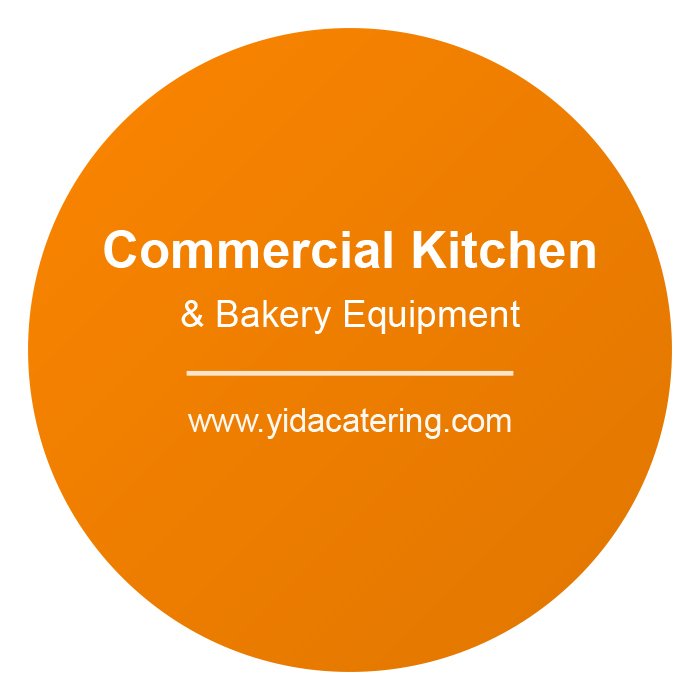When it comes to running a successful restaurant, the right equipment can make all the difference. One of the most crucial pieces of equipment in any bakery is the oven. Choosing the right bakery oven is essential for producing high-quality baked goods efficiently and consistently. This guide will help you navigate the various types of bakery ovens available, their features, and how to select the best one for your restaurant.
Understanding the Types of Bakery Ovens
1. Conventional Ovens
Conventional ovens are the most common type found in restaurants and bakeries. They use a heating element to create heat, which is then circulated naturally without the aid of fans. These ovens are versatile and can handle a variety of baking tasks, from bread to pastries.
Pros:
- Affordable and widely available.
- Suitable for a range of baking applications.
- Easy to use and maintain.
Cons:
- Heat distribution may not be uniform.
- Longer preheating times compared to other types.
2. Convection Ovens
Convection ovens feature fans that circulate hot air around the food, ensuring even cooking and browning. This makes them ideal for baking cookies, cakes, and pastries.
Pros:
- Faster cooking times due to improved heat circulation.
- More even baking results.
- Energy-efficient compared to conventional ovens.
Cons:
- Can be more expensive than conventional ovens.
- Requires some adjustment in baking times and temperatures.
3. Deck Ovens
Deck ovens have multiple baking chambers, or decks, allowing for high-volume production. They are commonly used in pizzerias and bakeries for baking bread and pizzas.
Pros:
- Excellent heat retention and even baking.
- Ideal for high-volume baking.
- Can be used for various types of baked goods.
Cons:
- Higher initial investment and maintenance costs.
- Requires more space compared to conventional ovens.
4. Rack Ovens
Rack ovens are designed to hold multiple racks of baked goods at once, making them perfect for large-scale production. They are often used in commercial bakeries.
Pros:
- High capacity for baking large quantities.
- Even heat distribution for consistent results.
- Can be operated continuously.
Cons:
- Requires significant space.
- Higher energy consumption.
5. Rotary Ovens
Rotary ovens are designed with a rotating rack inside, allowing for even baking without the need for manual rotation. They are ideal for baking breads and pastries.
Pros:
- Consistent baking results due to even heat distribution.
- High production capacity.
- Automated operation reduces labor costs.
Cons:
- Higher upfront costs.
- May require specialized training for operation.
Key Features to Consider
When selecting a bakery oven, there are several key features to consider to ensure it meets your restaurant’s needs:
1. Size and Capacity
Consider the size of your kitchen and the volume of baked goods you plan to produce. A larger oven may be necessary for high-volume operations, while a smaller one may suffice for a café or bakery with lower production needs.
2. Temperature Range
Different baked goods require different baking temperatures. Ensure the oven you choose can reach the necessary temperatures for your recipes. Some ovens offer adjustable temperature settings for added flexibility.
3. Energy Efficiency
Energy costs can significantly impact your restaurant’s bottom line. Look for ovens that are energy-efficient, as they can save you money over time. Energy Star-rated ovens are a good choice for reducing energy consumption.
4. Ease of Use
Choose an oven that is user-friendly, especially if your staff will be operating it. Digital controls, timers, and easy-to-read displays can enhance usability.
5. Maintenance Requirements
Consider the maintenance needs of the oven. Some models may require more frequent cleaning or servicing than others. An oven that is easy to clean will save you time and effort.
Making the Right Choice
Selecting the right bakery oven for your restaurant involves careful consideration of your specific needs and workflow. Here are some steps to help you make an informed decision:
1. Assess Your Baking Needs
Evaluate the types of baked goods you plan to produce and the volume required. This will help you determine the oven type and size that best suits your operation.
2. Set a Budget
Bakery ovens can vary widely in price. Establish a budget before shopping to narrow down your options. Keep in mind that investing in a quality oven can lead to better efficiency and product quality.
3. Research and Compare Models
Take the time to research different oven models and brands. Compare features, prices, and customer reviews to find the best fit for your restaurant.
4. Consult with Experts
If you’re unsure about which oven to choose, consider consulting with industry experts or equipment suppliers. They can provide valuable insights and recommendations based on your specific needs.
5. Test Before You Buy
If possible, try to test the ovens you are considering. Many suppliers offer demonstrations or allow you to see the oven in action. This can help you gauge its performance and usability.
Conclusion
Choosing the right bakery oven is a critical decision for any restaurant or bakery. By understanding the different types of ovens available and considering key features, you can select an oven that meets your specific needs. Whether you opt for a conventional oven, convection oven, or a more specialized model, the right choice will enhance your baking efficiency and product quality, ultimately contributing to your restaurant’s success. Take the time to assess your needs, set a budget, and research your options to make an informed decision that will benefit your business for years to come.

